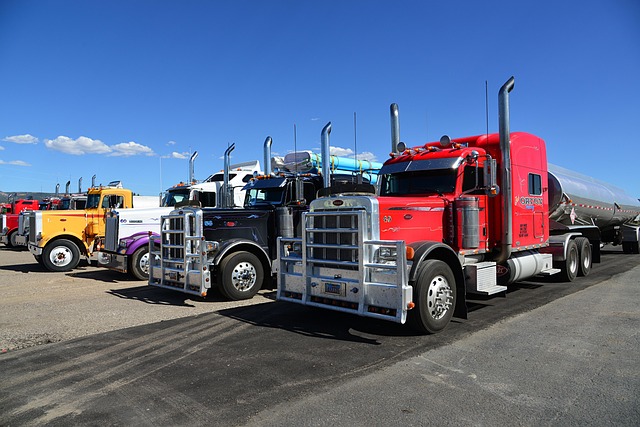Looking to register your car in California? This comprehensive guide walks you through the entire process, from understanding key requirements to securing your license plate. We break down the necessary documents, steps to visit your local DMV, and even cover the crucial dmv VIN verification process. By following these clear instructions, you’ll be cruising Cali roads legally and confidently in no time.
- Understand California Car Registration Requirements
- Gather Necessary Documents for Registration
- Visit Your Local DMV for Vehicle Registration
- Perform DMV VIN Verification Process
- Pay Registration Fees and Receive License Plate
Understand California Car Registration Requirements

Before registering your car in California, it’s crucial to understand the state’s specific requirements. The California Department of Motor Vehicles (DMV) mandates several steps for car registration, including a thorough vehicle inspection and verification of the Vehicle Identification Number (VIN). This process ensures that all vehicles on California roads meet safety standards and are properly identified.
One key aspect is the DMV VIN verification, which involves checking the VIN against national databases to confirm its authenticity and history. Additionally, you may opt for a mobile vin inspection or use a mobile vin verifier for convenience, allowing you to complete this step without visiting a DMV office. These services streamline the registration process by making it more accessible and often faster, especially if you’re in a hurry to get your vehicle on the road.
Gather Necessary Documents for Registration

Before you start the registration process, it’s crucial to gather all the essential documents required by the California Department of Motor Vehicles (DMV). This includes proof of ownership, typically a vehicle title or bill of sale; a valid driver’s license; and current insurance information. Additionally, for vehicles that are over 10 years old, you’ll need to complete a Vehicle Identification Number (VIN) inspection.
A mobile VIN verification service can be a convenient option, as it allows you to conduct the inspection from the comfort of your home or even while you’re on the go. Some services offer this via an app, where a professional will remotely inspect and validate your vehicle’s VIN through photos and documentation. This step is crucial for ensuring that the car matches the information provided in the registration process.
Visit Your Local DMV for Vehicle Registration

Visiting your local DMV for vehicle registration is a crucial step in ensuring your car is legally recognized in California. The process begins with a comprehensive vehicle inspection that includes a DMV VIN verification. This involves checking the unique Vehicle Identification Number (VIN) to confirm the vehicle’s details, such as make, model, and year. It’s during this stage that you’ll also need to provide essential documentation like proof of insurance, car ownership, and identification.
For those who prefer a more convenient approach, mobile vin inspection services are available, offering an alternative to the traditional DMV visit. These mobile vin verifier services come to your location, performing the necessary VIN checks and streamlining the registration process, especially for busy individuals or those living in remote areas.
Perform DMV VIN Verification Process

Performing a DMV VIN (Vehicle Identification Number) verification is a crucial step in registering your car in California. This process ensures that your vehicle meets all safety and emissions standards before it’s allowed on the state’s roads. You can complete this check through various methods, including online or by visiting a local DMV office. If you opt for a mobile vin inspection, a certified technician will come to your location to perform the verification using specialized equipment.
For a vin inspection in California, you’ll need to provide key details about your vehicle, such as its make, model, and year. The DMV will then cross-reference this information with their records to confirm the vehicle’s history and ensure it complies with all legal requirements. This step is essential, as it helps prevent fraud and ensures only safe, legal vehicles are registered on California’s highways.
Pay Registration Fees and Receive License Plate

After successfully passing the vehicle inspection, the next step in registering your car in California is to pay the registration fees and receive your license plates. The California Department of Motor Vehicles (DMV) sets the fees, which vary based on the type and age of your vehicle. You can pay these fees online, by phone, or in person at a local DMV office. It’s important to note that some counties may offer drop-off services for convenience, especially if you’ve recently purchased a car through a dealership.
Once your payment is processed, the DMV will arrange for license plates to be issued. If you opted for a mobile vin verifier or conducted a vin inspection yourself, ensure that the vehicle identification number (VIN) on the plates matches the one registered to your vehicle. This step is crucial in maintaining accurate records and ensuring compliance with California’s vehicle registration regulations.
Registering a car in California involves understanding state requirements, gathering essential documents, and completing a straightforward process at your local DMV. By following these steps, from providing necessary paperwork to undergoing the VIN verification process, you’ll ensure your vehicle is legally registered. Remember, timely registration is crucial for road safety and avoiding penalties. So, take a dive into this guide, and get ready to hit the California highways with a smooth, legal process!
